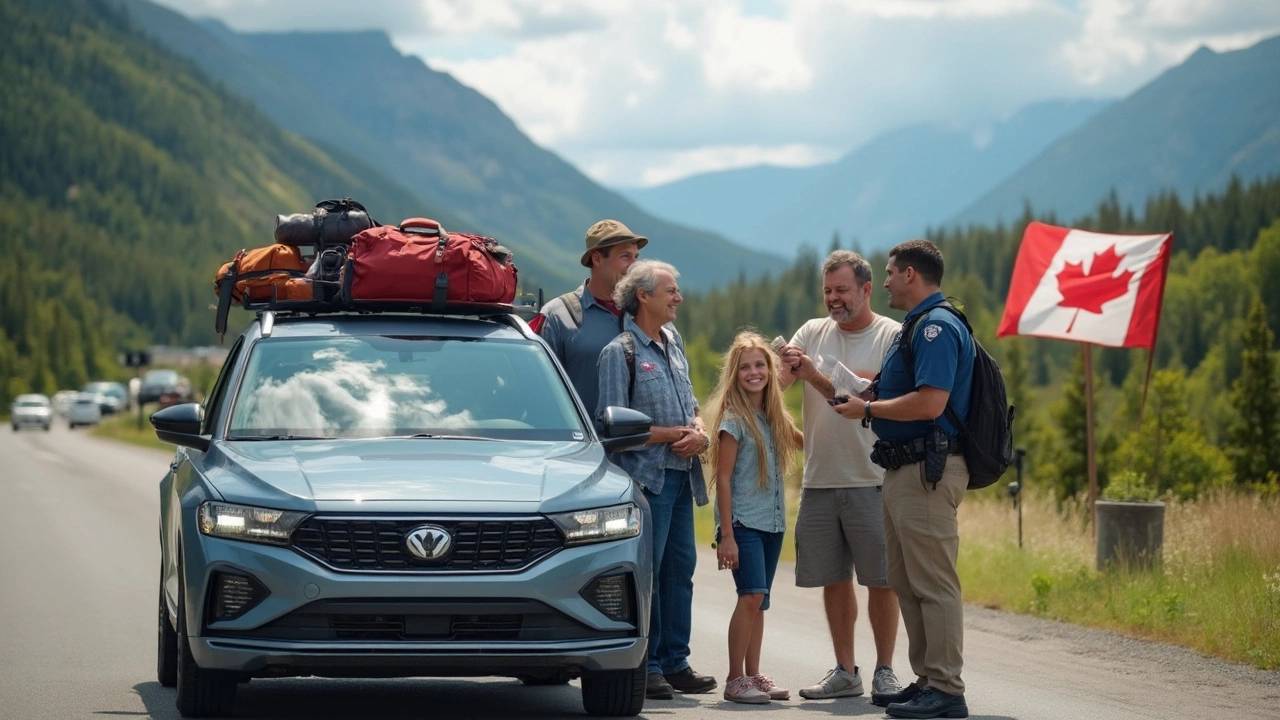Canada Travel Driving Guide – What Every Driver Needs to Know
Planning a road trip across Canada? From the Pacific coast to the Atlantic islands, the country offers endless scenery, but the rules and habits on the road can feel different from what you’re used to. This guide gives you the basics you need right away – no fluff, just the info that will keep you safe and help you enjoy the drive.
Key Canadian Driving Rules
First off, remember that Canada drives on the right side of the road, just like the U.S. and most of Europe. Speed limits are posted in kilometres per hour, so a 100 km/h sign means about 62 mph. If you’re used to miles, keep a conversion app handy.
Seat‑belt use is mandatory for everyone in the vehicle, and children must be in approved car seats or booster seats until they’re 8 kg or 145 cm tall, depending on the province. Alcohol limits are strict: the legal blood‑alcohol concentration is 0.05% in most provinces, but some, like Ontario, enforce a zero‑tolerance rule for new drivers.
Winter driving is a reality in many parts of Canada. When temperatures drop below freezing, you’ll need winter tires in provinces such as Quebec, British Columbia, and parts of Ontario. Carrying a basic emergency kit – blankets, food, water, a flashlight, and a shovel – can be a lifesaver if you get stuck on a snowy stretch.
Watch out for school buses. In every province, you must stop when a school bus flashes red lights and the stop sign is extended. You can only move forward once the lights stop blinking and the sign is withdrawn.
Practical Tips for a Smooth Road Trip
Plan your fuel stops ahead of time. While major highways have plenty of stations, remote routes in the Rockies or the Atlantic provinces can have miles between pumps. A quick check on a fuel‑price app will help you avoid running low in the middle of nowhere.
Use a GPS that’s set to “Canada” mode. Some devices default to U.S. maps and can miss small towns or scenic pull‑outs. Enable voice directions so you can keep your eyes on the road while still getting accurate guidance.
Take advantage of the rest‑area culture. Canada’s highway rest stops often include free Wi‑Fi, picnic tables, and clean bathrooms. They’re perfect for a quick stretch and a chance to snap a photo of the view.
If you cross a provincial border, remember that traffic laws can change. For example, Quebec has stricter speed‑camera enforcement, while Alberta allows a higher speed limit on some rural highways. A quick glance at the provincial driver’s handbook online will keep you from accidental violations.
Finally, respect wildlife. In the evenings and early mornings, animals like deer and moose are most active. Reduce speed in forested areas, use high‑beams when safe, and be ready to brake gently if an animal appears.
With these basics under your belt, you’re ready to hit the road and explore Canada’s endless horizons. Drive safe, stay alert, and enjoy the ride!
- April 18 2025
- 0 Comments
- Rowan Cavendish
Can I Use My Enhanced Driver's License to Go to Canada? What You Need to Know
Thinking of driving to Canada with only your enhanced driver’s license? This article breaks down if you can do it, what documents you really need, and gives you real examples and tips for a smooth border crossing. Find out the difference between a regular and enhanced license, and see where the Pass Plus course fits in. Whether you’re road-tripping or heading for business, you’ll get practical advice to avoid any surprises at the border.
- Driving Lessons (41)
- HGV Training (31)
- Driving Test Tips (31)
- Driving Test Booking (26)
- Driving Licence Renewal (23)
- Driving Theory Test (21)
- Pass Plus Course (15)
- Driving Tips (15)
- Intensive Driving Course (15)
- Driver Licensing (14)
Categories
- December 2025 (12)
- November 2025 (13)
- October 2025 (21)
- September 2025 (5)
- August 2025 (8)
- July 2025 (30)
- June 2025 (30)
- May 2025 (30)
- April 2025 (31)
- March 2025 (30)
- February 2025 (28)
- January 2025 (34)
Archives
- driving lessons
- driving test
- driving tips
- intensive driving course
- driving test tips
- HGV training
- learn to drive
- driving theory test
- driver training
- driving test booking
- pass driving test
- HGV driving
- road safety
- driving license renewal
- Virginia driving test
- learner drivers
- safe driving
- Virginia driver's license
- driving license
- learning to drive

